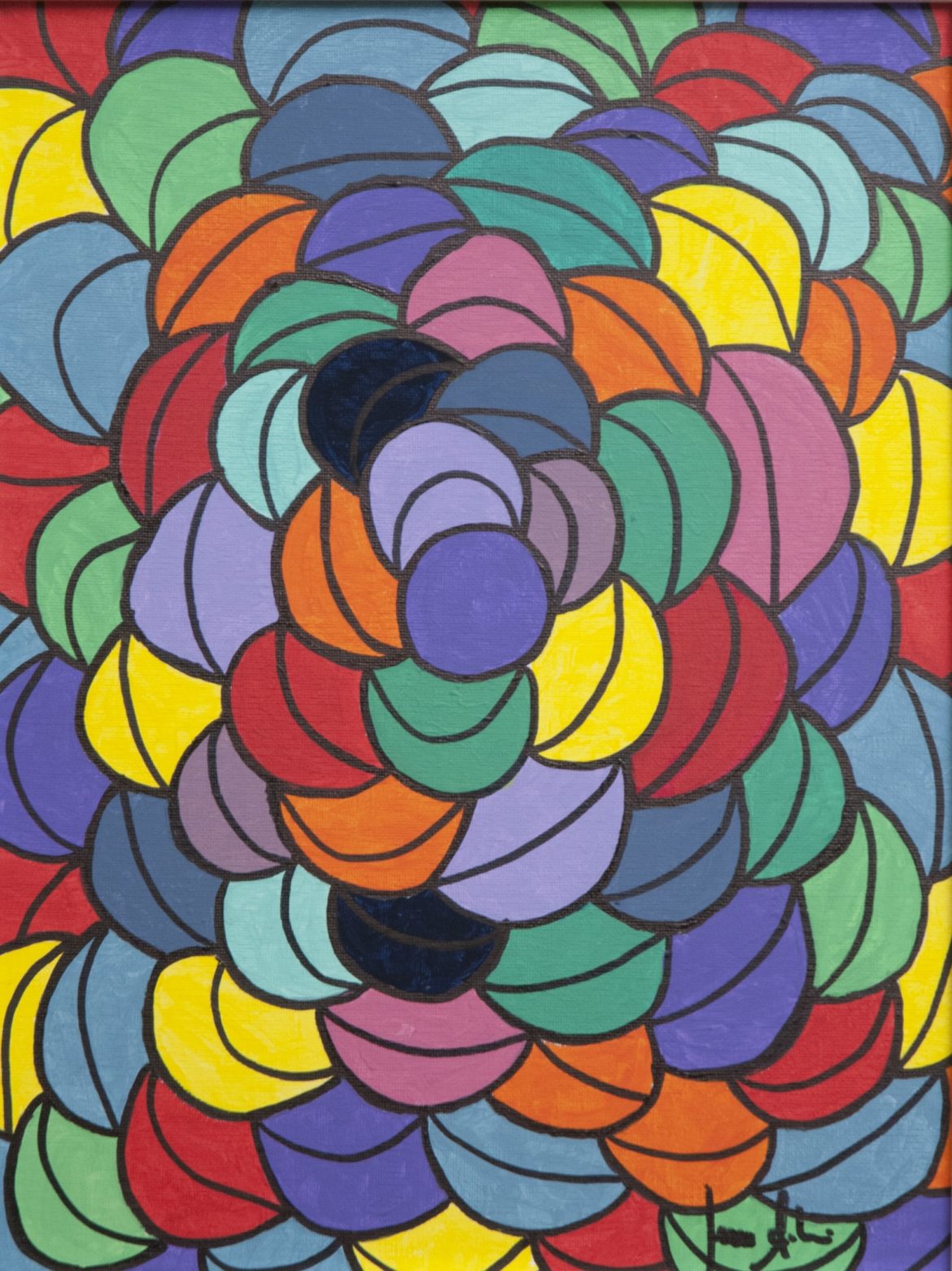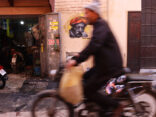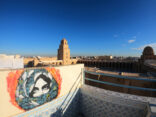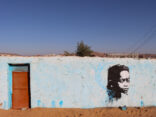Autore
Indice
- Straus’s Criticism of Heidegger
- The Allon and the Primal Animal Situation
S&F_n. 17_2017
Abstract
Existence and Life. Erwin Straus’s Criticism of Heidegger’s Daseinsanalytik
Erwin Straus was a German psychiatrist and phenomenologist generally known as the author of Vom Sinn der Sinne, a book published in 1935. However, in what follows I will rely almost exclusively on Psychiatry and Philosophy, an essay he wrote in 1963, almost thirty years later. My main goal is to present Straus’s contribution to a phenomenological ontology of life. I will begin by presenting Straus’s criticism of Heidegger’s notion of Dasein and then I will try to sketch Straus’s positive contribution to a phenomenological theory of the living.
-
Straus’s Criticism of Heidegger
In Psychiatry and Philosophy Straus confronts the question of the foundation of psychiatry and he takes into account Ludwig Binswanger’s existential analysis and its philosophical background: Heidegger’s existential analytic. Binswanger, in fact, believed that Heidegger’s existential analytic could provide such a foundation. It is precisely this claim that Straus wants to challenge here. Let me remark that here Straus mentions only Being and Time and does not take into account Heidegger’s lecture course on The Fundamental Concepts of Metaphysic, where he delivers his most wide and famous discussion on life. Nevertheless, it seems to me that what he says there does not escape Straus’s criticism.
According to Straus, the category of Dasein doesn’t do justice to the concrete life of man and animal as well. As such, Dasein cannot serve as the fundamental concept of psychiatry. In other words, man’s mode of being, that includes the essential possibility of mental illness, differs from the mode of being that Heidegger calls Dasein. According to Straus, to provide a philosophical foundation of psychiatry we should replace existence with life. Of course, he is well aware of the fact that Being and Time is not a book about anthropology or biology. He knows that Dasein should not be confused with man: Dasein is man’s being, his “essence”; it is what constitutes his essential transcendence towards Being. However, man is not just Dasein, but a sort of mixture between existence and presence-at-hand (Vorhandenheit). However, if this is true, we still can ask how could man be ontologically determined both as presence-at-hand and as Dasein, if these two modes of being are so radically separated, as Heidegger claims in Being and Time.
According to Straus, Heidegger is unable to understand the unity of both existence and presence-at-hand – a unity, of course, that is reminiscent of the unity of mind and body and that designates, perhaps with misleading metaphysical categories, the very mode of being we usually refer to when we talk about life. In other words, by separating so sharply existence from presence-at-hand, Heidegger’s ontology slips into a dualism that he is then unable to overcome – a dualism that eventually repeats Descartes’s original mistake. As Straus puts it, «with the distinction of the modes of Being the question arises of the possibility of their reunification, not limited to the modes of Being themselves but in relation also to the ontic region determined by them»[1].
Straus applies to Heidegger the same criticism he had directed against Descartes in Vom Sinn der Sinne. Generally speaking, Straus believed that the Cartesian dualism of res extensa and res cogitans was the main obstacle to overcome in order to think life. In fact, the living is precisely what resists and challenges this age-old metaphysical dichotomy that dominated Western philosophy. In order to think life, we must develop a new ontology. It is not by chance that Descartes was at the same time the founder of modern physiology – a discipline that reduces the living body to a pure mechanism that reacts to external stimuli, and therefore to a dead body – and the initiator of modern philosophy of consciousness: a tradition that goes from Descartes to Husserl through Kant’s transcendental idealism. Materialistic realism and transcendental idealism both result from the same theoretical decision: Descartes’s substance dualism and its inability to think life.
A symptom of Heidegger’s dualism is that existential determinations such as “Being-in” and “Being-alongside”, that express the being of Dasein, are restricted to man and do not seem to apply to animals. This restriction, according to Straus, is not justifiable. In fact, he asks rhetorically:
Doesn’t “Being-in” also apply to the bird “who dwells the leafy twigs among” or to the fox who leaves his lair by one exit and returns by another? And doesn’t “Being-alongside” apply to the dog who follows his master? Does man’s “Being-in” originate in the Being of Dasein, or does it originate, for man and animal alike, in their animal nature?[2]
That life as an ontological problem is here at stake is clear from the following quotation, where Straus is referring to Heidegger’s famous privative zoology: «In “Being and Time” there are only a few references to the ontological problem of “life”, and these confuse rather than clarify»[3]. According to the approach of privative zoology, life should be understood as Dasein minus something. Opposing directly this view, Straus states than «the “simple organism” is more, not less than Dasein».
When he says that the organism is more than Dasein, Straus has in mind its being generated and its ability to generate. Another symptom of Heidegger’s dualism, in fact, is that Being and Time has so much to say about death but nothing to say about birth and procreation – two phenomena that point not only to what is natural in man but also to his historical dimension. As Husserl suggested in his late research manuscripts, man’s historicity or Geschichtlichkeit is grounded in generativity and not in Dasein’s solitary confrontation with its own death. On the contrary, with a slight but significant change in perspective, even death could appear as a «possibility inherent in life itself» rather than Dasein’s extreme possibility. Furthermore – and this is another symptom – Dasein is also sexually indeterminate, it has no gender: das Dasein. Every possible connection between man and nature, including every tie with his fellow animals, is broken or seriously underestimated as irrelevant on the ontological level.
In short, the notion of Dasein cannot account for the fact that man is also a living being – even better, it cannot account for the fact that existence itself is a modulation of life, to the point that we could say that Dasein as such – transcendence towards Being (or intentionality, as phenomenologists usually call it) – is grounded in life itself. As Straus asks ironically, adumbrating exactly this perspective: «In his later works Heidegger named man “the herdsman of Being”. Does he first become human after receiving this call, or does Being call and evoke him because his nature has fitted him to meet such a challenge?»[4].
Of course, Heidegger was absolutely right in his rejection of Husserl’s transcendental idealism in the name of the mundanity of a transcendental subject that could no longer be described as pure consciousness or ego. Heidegger understood that the being that makes the world appear must belong to the very same appearing world in order to perform its transcendental function. It is precisely this essential ambiguity of the transcendental subject that designates the word “life”. However, according to Straus, he did not manage to fulfill this requirement. In fact, Heidegger’s ontology of the Dasein is unable to give a satisfying account of embodiment or incarnation – that is, precisely the name that Western philosophy has always given to the mundane dimension of the subject, to his ontological kinship with the world which is essential to the definition of life. Straus was certainly not the first to remark that Heidegger’s existential analysis, in spite of his insistence on Geworfenheit, didn’t provide a satisfying ontological foundation of embodiment. As far as embodiment is concerned, Straus’s approach is the opposite of Heidegger’s: it is impossible to understand embodiment in the light of existence; on the contrary, existence has to be understood in the light of embodiment. «His existence, Straus writes, his historicality, are supported and made possible by his living body»[5].
The title of the first chapter of Psychiatry and Philosophy, the one devoted to the critique of Heidegger, is «Existence and Nature». In fact, Straus believes that the misunderstanding of life goes hand in hand with the misunderstanding of nature, whose mode of being cannot be determined as mere hyle or “material”, according to the point of view of the world of the craftsman that Heidegger uses as a model to describe the life-world. The being of nature is more primal than the distinction between hyle and morphé: a distinction that arises only when man has already established his domination over nature. In the life-world, nature is no presence-at-hand. Straus often describes it in terms that are reminiscent of Husserl’s late notion of Earth as the Originary Ark on which man is grounded and that, therefore, has not very much in common with nature as the object of Naturwissenschaften. As such, nature is not even readiness-to-hand (Zuhandenheit). Once again, the approach is the opposite of Heidegger’s: if he discovered the being of nature in the light of the “readiness-to-hand” and determined it as mere “presence-at-hand”, Straus discovers “readiness-to-hand” in the light of nature, which in turn cannot be determined as “presence-at-hand”, that is as a defective mode of Zuhandenheit itself. As the living is neither Dasein nor presence-at-hand, so is nature neither readiness-to-hand nor presence-at-hand: «The purely present-at-hand, he writes, is a construction of mathematical science; it is not, however, the sole possible alternative to the ready-to-hand and to Dasein»[6].
As in ancient myths and religions, and in poetry as well, Nature should rather be described as a Might against which human beings must struggle in order to build a human world. So, both an Ark to set foot on and a Might to struggle against – the relation of man to nature is characterized by a certain ambivalence. How we should understand this ambivalence is the subject matter of the second part of this paper.
- The Allon and the Primal Animal Situation
In Psychiatry and Philosophy Straus calls Nature «the Allon», the Other. Basically, it is a synonym of the world understood as Lebenswelt, as the world all of us have access to through sensory experience, and to which we all belong as living beings. Now, in this book Straus mainly talks about the Allon in terms of the visible, that is the world as we can see it. However, our relation to the Allon is by no means limited to sight, but involves sensory experience as a whole. We have access to the Allon through other senses, too, and each sense exhibits a peculiar way of relating to the world. Both here and in other works, Straus delivers very detailed analyses of the way in which every single sense implies a different configuration of our relationship with the world, focusing particularly on sight and hearing[7]. However, now I am interested in the general structure of the relation of the organism to the Allon, regardless of what is typical of the different senses.
The description of the relation of the living to the Allon that Straus delivers in Psychiatry and Philosophy is at the same time a phenomenological theory of intersubjectivity or «communication», as he says. This communication is not limited to human beings: «There seems to be good reasons for not viewing the relation to the visible and the possibility of mutual understanding as exclusively human privileges», he writes[8]. Both the animal and I have access to the same world and we relate to each other as parts of it. The relationship to the Allon is even prior to the relationship between me and other living beings. I do not only experience the other as experiencing the same world as mine. More importantly, I experience myself and the other as well on the basis of our common relationship to the Allon. I can communicate with the other – man or animal – only because we share the same world. Intersubjectivity is constituted only on the basis of the relationship to the Allon we all have in common. When this relationship is somehow disturbed or interrupted, as in the case of mental illness, every chance of understanding the other disappears, since his world is no more the same world we all experience, but it has become his own idios kosmos.
Here Straus’s anti-Cartesianism is evident. I do not exist as a separate substance who experiences only her inner life and somehow has to reach the outside world. In fact, I am constituted as a subject only through the way in which I relate to the world, I am nothing outside of this relation: this is the only way to ground the possibility of communication between me and the others, the only possible solution to the question of intersubjective constitution that Husserl was never able to solve, and to the parallel question of the mundanization of the ego. In a critical remark on Husserl’s analysis of the stream of consciousness, he writes:
The meaning of “mine”, of “my” lived body and also of “my” experiences is not given prior to any experiencing of the world. The meaning of “mine” is determined in relation to, in contraposition to, the world, the Allon, to which I am nevertheless a party. The meaning of “mine” is not comprehensible in the unmediated antithesis of I and not-I, own and strange, subject and object, constituting I and constituted world. Everything points to the fact that separateness and union originate in the same ground[9].
What’s important here is not much the anti-Cartesian conception of subjectivity, which is something more or less every phenomenologist would agree on, but the fact that the relation between subjectivity and the world is described in terms of the common ground of both separateness and union, of both the organism’s being part of the world and his possibility to differentiate himself from it as an individual who is able to experience it. This remark brings us closer to the core of Straus’s theory of the living. In fact, the question we should ask is: how we should determine the mode of being of the organism if this being has to be the common ground of both contact and distance? According to Straus, the answer is motility. Only something whose mode of being is ontologically characterized as motility can have this kind of relation with the world – or better, can be constituted as the “subject” of this relation. But what kind of motility does Straus have in mind here?
Among all possible kinds of movement, he distinguishes locomotion from getting up (Aufstehen) and he claims that getting up from the ground is the primal and fundamental kind of motility; it is the very condition of possibility of our relation to the Allon. As every living organism, including animals, we experience the world that is given to us through sensory experience thanks to the fact that we are able to overcome gravity[10]. Here we reach Straus’s perhaps most original contribution: the idea that sensing and moving are the same thing. Thus, they cannot be separated as two different processes – one occurring on the inside and the other on the outside. The identity of sensory experience and movement is the logical consequence of the rejection of Descartes’s dualism. In fact, this claim is the heart of his theory of sensory experience and provides the foundation of incarnation, the unity of body and mind that the phenomenon of life forces us to think. Now it is not possible to present this claim in further details, so I will focus on Straus’s conception of motility as the ontological ground of the relation between the organism and the world.
Getting up involves the paradoxical unity of both our kinship with the world and our confrontation with it: Earth is experienced at the same time as something that bears us, allowing us to move, and as something we are opposing to, in the attempt to not fall down. The opposite determinations of the relation of the organism to the Allon are both present. Apparently Straus never really distinguishes explicitly empirical movements from a transcendental, ontological movement as the condition of possibility of actual, empirical movements. However, he attributes transcendental features to movement and so his description of Aufstehen is implicitly transcendental, or ontological. This is suggested by the way in which he distinguishes getting up from locomotion. «Getting up […] precedes every partial or complete locomotion»[11], he says. Locomotion has a beginning and an end – we go from A to B, from a single place to another single place – and so it presupposes an already given space. On the contrary, when we get up we don’t go anywhere, we don’t reach any single place. Thus, in getting up we relate to space as a whole, thereby making empirical movements such as locomotion possible. When we get up, it is the “Here” that is constituted, the very same “Here” that defines the way in which my body is given to me as experiencing subject. Getting up is also prior to the dialectic of striving and satisfaction that is typical of locomotion and, eventually, of intentionality as such: in fact, not only in getting up we don’t strive toward anything but we have to struggle constantly against gravity. Thus, in getting up we never experience something like satisfaction.
The relation between the living organism and the world that is established in getting up is what Straus calls «primary» or «primal animal situation». This situation is prior to the living organism as such: the living organism doesn’t get up from the ground; rather, it is constituted as an individual living organism only through getting up, only because motility is its fundamental ontological determination.
From the primary animal situation depends also the meaning of incarnation, in particular the double way in which we experience our body both as Leib and Körper: «The dual role of my own body corresponds to the conjunction in opposition that characterizes the relationship to the Allon. It is my own lived body, the body I am, but also the body I have»[12]. In fact, since the relationship to the Allon is never a radical opposition – the Earth is also the soil that bears us – the boundaries between my body and the Allon are not sharp, as anosognostic patients clearly show[13]. For me it is possible to experience my body as an object – up to the limit of anosognosia and schizophrenia – because of the ontological kinship between me and the Allon, because my being separate from it is not a radical brake but a dehiscence[14]. Here Straus is obviously very close to Merleau-Ponty’s ontology of the flesh. At the same time, the fact that he stresses so much the important of motility is more reminiscent of Patoçka. In fact, it is important not to miss Straus’s point here: our dialectical relationship to the world is not illuminated by how we experience our body both as Körper and Leib. The latter is a consequence of the former: it is our dialectical relationship to the world that explains our bodily experience. Incarnation is grounded in motility.
The last thing that we should consider is that by conceiving the organism as ontologically determined by motility, Straus delivers a theory that explains on the basis of the same principle both human and non-human subjectivity, insofar as they share the same mode of being – motility – that gives them the access to the same world through sensory experience. So, against Heidegger, the continuity between man and animal or between man and nature is obviously secured here.
[1] E. Straus, Psychiatry and Philosophy, in E. Straus, M. Natanson, H. Ey, Psychiatry and Philosophy, ed. by M. Natanson, Springer, Berlin-Heidelberg 1969, p. 6.
[2] Ibid., p. 5.
[3] Ibid., p. 6.
[4] Ibid., p. 9
[5] Ibid., p. 11.
[6] Ibid., p. 14.
[7] See E. Straus, Die Formen des Räumlichen. Ihre Bedeutung für die Motorik und die Wahrnehmung, in Psychologie der menschlichen Welt, Springer, Berlin-Heidelberg 1960, pp. 141-178.
[8] E. Straus, Psychiatry and Philosophy, cit., p. 28.
[9] Ibid., p. 29 (my emphasis).
[10] Ibid., p. 39.
[11] Ibid., p. 34.
[12] Ibid., p. 45.
[13] Ibid.
[14] Ibid., p. 46.








